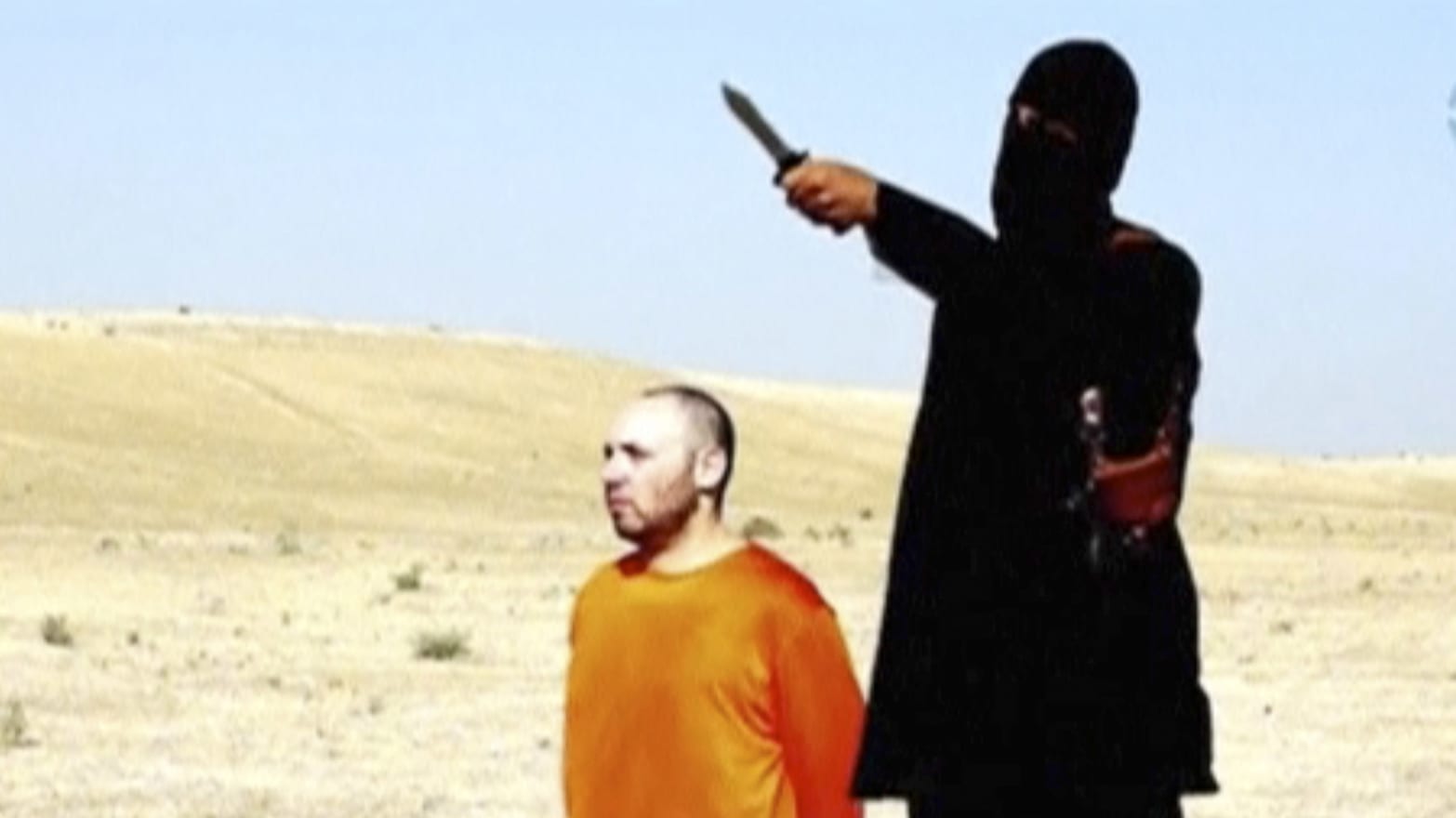LONDON — A British man named today as the masked ISIS killer “Jihadi John” who beheaded two American journalists on camera was tracked by MI5, Britain’s domestic intellicence service, for at least five years. His links to terror networks were well known—and yet, he was released by the authorities.
Mohammed Emwazi, a computer science graduate from London, was described as a core member of an extremist network linked to the al Shabab group in Somalia during a court hearing as far back as 2010. Some of his associates reportedly were subjected to control orders or placed under formal observation by British security officials, but he escaped any enhanced scrutiny.
Emwazi grew up in a rented apartment in a modest block in North West London with six members of his family. According to CAGE, a group that represents terror suspects, he is 26 years old and he moved to Britain with his family from Kuwait at the age of six. He went on to study at the University of Westminster, one of Britain’s lesser institutions where the student union has been accused of links to extreme groups in the past. His family was said to be in “utter, utter shock.”
The Washington Post first reported on Thursday that Emwazi was the masked killer who beheaded James Foley in a video posted by the so-called Islamic State in August last year. Within a month, the FBI claimed that it knew the man’s identity, but that did not stop the killing, which was documented in a series of increasingly barbaric videos.
London and Washington appeared to have been wrong-footed by the story in the Post, which relied heavily on the recollections of Asim Qureshi, the research director at CAGE, a controversial group whose director is former Guantanamo detainee Moazzam Begg.
CAGE then posted detailed correspondence with Emwazi, whom Qureshi described as “a nice young man.” The organization sought to portray him as the victim of harassment by the British security forces, suggesting he was radicalized because of his treatment.
On Thursday morning, U.S. officials confirmed to Reuters that Emwazi was the man behind the mask, but still British sources continued to obfuscate. One security source advised The Daily Beast “the story is a lot more complicated."
A spokesman for David Cameron indicated that Britain was frustrated by the disclosure. "The Prime Minister would be concerned about information being put into the public domain at any time that might jeopardize ongoing police or security investigation, or indeed the safety of British citizens," he said.
While officials vacillated, CAGE staged a press conference which began with a condemnation of arbitrary detentions and blamed Western security officials for radicalizing a man who would go on to commit some of the most notorious terrorist acts ever captured on camera.
What CAGE described as harassment began in 2009 when Emwazi traveled to Tanzania. He claimed his only reason for visiting East Africa was an interest in experiencing the majesty of the Serengeti on a safari. Security officials thought otherwise and Emwazi and two fellow Muslim travelers were stopped when they landed at Dar-es-Salaam, turned around and put on a plain to Schiphol airport in the Netherlands. There, they were interrogated by people from MI5.
In emails to CAGE, Emwazi said he said been intimidated by one of the interrogators: “He said that they had been keeping a close eye on me and kept threatening,” telling him, “You’re going to have a lot of trouble ...you’re going to be known...you’re going to be followed...life will be harder for you.”
CAGE first gave the story to The Independent in 2010. The questioning of Emwazi, who was using the name Muhammad ibn Muazzam, as an illegal interrogation. CAGE called it arbitrary detention.
And yet documents from a secret court hearing, obtained by the BBC, showed that the British government suspected Emwazi was part of a London network that had raised funds and sent fighters to East Africa to join al Shabab, which is affiliated with al Qaeda.
One of Emzawi’s associates in London was said to be Bilal al Bejawi a Lebanon-born Londoner who allegedly reached the upper echelons of al Qaeda leadership in East Africa. He would later be killed on the outskirts of Mogadishu, in Somalia, by a drone strike in 2012.
A former hostage held by ISIS told The Washington Post that Jihadi John was obsessed with Somalia and had shown al Shabab videos to captives while they awaited ransom, if they were from European countries that allowed such things, or the executioner’s short, brutal blade if they were Americans or Britons.
Qureshi said the Emwazi family was stunned by the revelation that Mohammed could have taken on the persona of Jihadi John. His father told CAGE that they reported him missing in 2012, and were told by police that he was believed to be in Syria.
“They were in utter, utter shock. They had no idea that these two people could be the same,” said Qureshi. “Even now, I am in a state of denial, I hope that in the end we got this completely wrong.”

